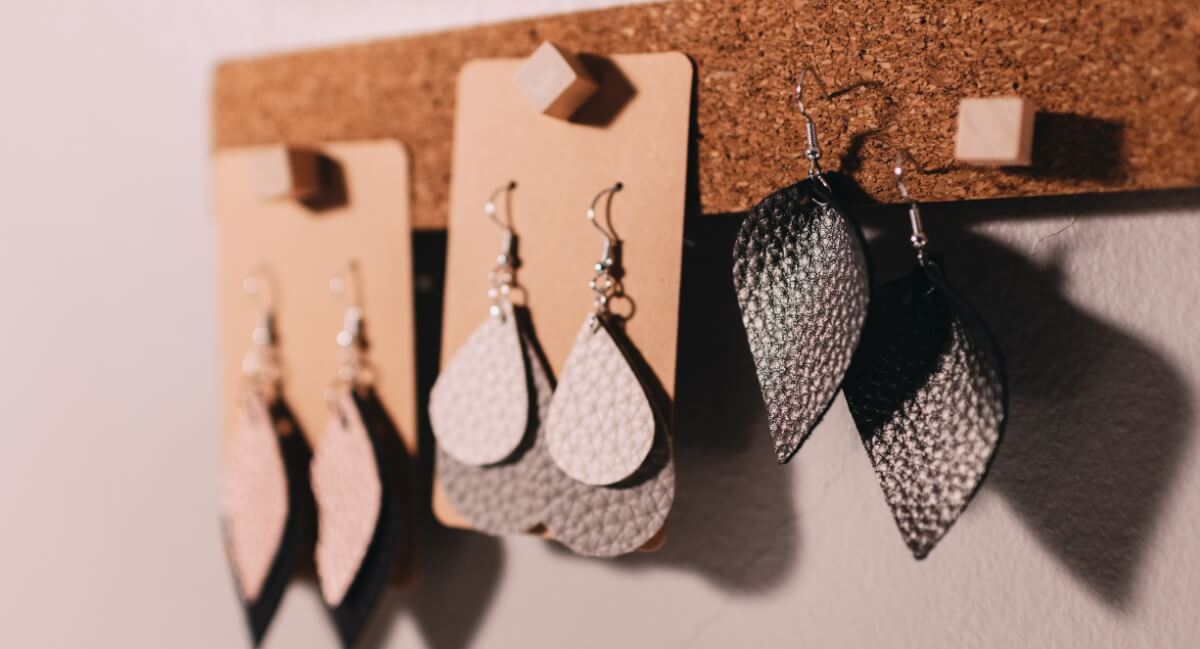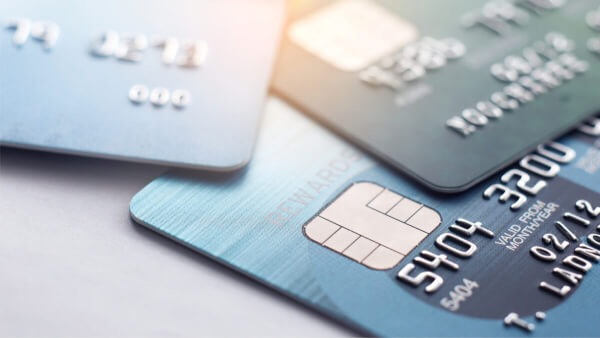WorldFirst Australia business review. The lowdown
If you run a business that deals with international trade, you know the importance of finding a service provider that makes international payments and foreign...

If you’re a crafter, jeweller or furniture maker, Etsy could be the perfect place to sell your goods. It’s a thriving online marketplace of handmade items, gifts, vintage pieces and much more.
But just how easy is it to sell on Etsy, and is it worthwhile for your business? Here, we’ll take a look at how to set up an Etsy shop and what products you can sell, plus fees, shipping considerations and much more.
You might also want to think about how you’ll get paid when selling on Etsy, especially when it comes to international buyers. For example, get a free Wise Business account and you can transfer Etsy payments in multiple currencies straight across¹. This means you’ll avoid paying high currency conversion fees.
But we’ll look at that in more detail later. Let’s start with the basics of selling on Etsy.
Etsy is a global marketplace with around 2.5 million active sellers² and 45.7 million active buyers³ worldwide in 2019. What does this mean for you and your products? Exposure, and lots of it. By selling via such a well-known and popular brand, you can reach far more potential customers than your website alone.
If you’re a new business, Etsy could be the perfect jumping-off point for selling online and finding an audience for your products. It’s an established, credible platform with a strong reputation for selling unique, high quality products.
If you’re not ready to set up your own website, selling on Etsy’s ready-made shop is a great way to get started. There are fees to pay, but the risk is relatively low. If it doesn’t work out, you can try selling somewhere else.
Anyone can sell on Etsy, but it’s important to decide whether you’ll be doing it as a hobby or a business⁴. If it’s a hobby, you can set up your free account without any legal or other hoops to jump through.
But if you’re a business which sells lots of items regularly on Etsy with the view of making a profit, you’ll need to declare your online earnings for tax purposes. You may also need to register your business and get an official Australian Business Number (ABN) in order to sell on Etsy.
Etsy works in a similar way to other online marketplaces. You sign up for an account and set up your own virtual Etsy shop, in which you can add listings for your products. You pay fees to Etsy for listing, transactions and payment processing, and are paid by the site at regular intervals once your items sell.
All transactions are secure and you benefit from seller protection. You’ll manage your Etsy shop online or using the Etsy app, monitoring orders and responding to buyers. There are also marketing and analytics tools to help you promote products and grow your business.
If you opt for the Standard package on Etsy, there is no monthly subscription fee. However, for each of your products, you’ll need to pay⁶:
There is also an Offsite Ads fee. This is where Etsy advertises your products across the web. If you make a sale through one of these adverts, you’ll pay Etsy a fee of 15%. You can choose whether or not to participate in these advertising services when you open your shop.
Etsy also offers a Plus package with a fee of $14 AUD a month⁷. This includes all the same fees as the standard package, but you’ll also get access to advanced features. These include new tools for customising your shop, you own custom .com store address and bonus listing and advertising credits.
There are quite a lot of fees for selling on Etsy, so you’ll need to factor all of these in when deciding how to price your products. Add up everything, from labour and materials to Etsy fees and shipping costs, to work out a decent profit margin.
It’s also a smart idea to research your competitors and their prices, and to do some homework on your target customer and how much they’re willing to pay.
Bear in mind that selling on any online marketplace can involve trial and error. You may need to make tweaks to your pricing every so often to keep up with competitors or react to demand.
Etsy has a few strict rules⁸ in relation to what you can and can’t sell on the platform. You must be selling items that are:
Above all, you must be transparent and honest about the goods you’re selling. For example, you can’t list something in the handmade category when you (or a named production partner) weren’t involved in making it. It’s all to maintain Etsy’s standards and image as a platform for unique, high quality goods.
Etsy sellers have to organise shipping themselves¹⁰, usually using a local or international courier service. You’ll need to shop around for the best deal, and work out the most affordable option.
You can offer a range of shipping options to your customers on Etsy, including Express and free shipping.
As you’ll be organising shipping yourself when selling on Etsy, you’ll also need to cover the costs. If you charge customers for shipping, bear in mind that the platform will take 5% of shipping fees¹¹. However, you can avoid this by building shipping costs into the price of the item, and advertising it to the customer as ‘free shipping’.
If you’re shipping your Etsy items internationally, remember that you’ll also need to look into the tax and customs requirements for each destination country.
If you’re keen to start selling on Etsy, here’s what you need to do to get up and running¹²:
You’re nearly ready to start selling your handmade or vintage products on Etsy. But before you leap in with both feet, here are some tips and tricks to bear in mind for successful Etsy selling:
Etsy is known for the exceptional quality of its products, all showcased with glorious, high-quality photos. Don’t underestimate the power of a crisp, perfectly arranged photo for attracting customers and selling products. Remember that customers on Etsy are often buying into a lifestyle, not just a product.
It’s well worth investing in high quality product photos for your Etsy shop, making sure to photograph from different angles with lots of detail (but minimal clutter).
On a platform like Etsy which has hundreds of thousands of product listings, you need to make it easy for customers to find yours.
Put yourself in your customers’ shoes – what would they type into the search box to find your products? It’s crucial to use popular keywords that best describe your items, and use them often – in descriptions, product tags, titles and more. Just make sure not to keyword spam, as your product descriptions still need to be appealing.
With global marketplaces like Etsy, you can reach customers all over the world. But if customers are paying in their own currencies, you could get stung when it comes to currency conversions. For example, if Etsy converts your earnings to AUD, you could be charged a 2.5% fee and be stuck with a poor exchange rate.
But there is a smart way to avoid high currency conversion fees. Get a Wise Business account and you’ll get local account details to link to your Etsy account. This means you can transfer your earnings straight from Etsy into your Wise multi-currency account for free. ¹³
From here, you can send money worldwide or spend in local currencies using your linked Wise Platinum Business MasterCard. You’ll get the real exchange rate on every transaction, and fees are always low and transparent. It could be a real money-saver, especially if your Etsy shop takes off.
So, that’s selling on Etsy in a nutshell. You should now have a better idea how to start your own Etsy shop, what fees to watch out for and how to sell internationally without losing money to high currency conversion fees.
You’re all set for Etsy selling success – good luck!
Sources used:
Sources checked on 27-July 2020.
*Please see terms of use and product availability for your region or visit Wise fees and pricing for the most up to date pricing and fee information.
This publication is provided for general information purposes and does not constitute legal, tax or other professional advice from Wise Payments Limited or its subsidiaries and its affiliates, and it is not intended as a substitute for obtaining advice from a financial advisor or any other professional.
We make no representations, warranties or guarantees, whether expressed or implied, that the content in the publication is accurate, complete or up to date.

If you run a business that deals with international trade, you know the importance of finding a service provider that makes international payments and foreign...

If you’re a business owner in Victoria seeking a low-rate business credit card solution, Bank of Melbourne (BOM) may be worth considering. Existing...

If you’re on the hunt for a suitable business credit card in Australia, there are several offerings available. A mutual or ‘customer-owned’ bank, Heritage...

Whether you have your own business already, or are looking to start one, there might be a time where you may need to seek out overseas suppliers to fulfil...

As a business continues to grow, sorting out its financial and banking aspects becomes important. Setting up a business account is a crucial step that can...

If you’re the owner of a business or run the finances of one, you might be considering business debit cards. These cards are usually connected to the...